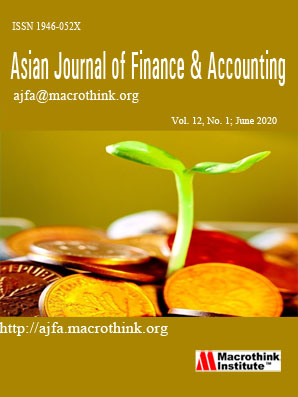Application of Credit Risk Management Model in Chinese Banks
Abstract
The main objective of this paper is to perform empirical analysis and research on the KMV and Zeta models, discussing whether banks in China could adopt both models in their credit risk management practices. In order to measure credit risk, the KMV model focuses on “Expected Default Probability” (EDP) that is calculated using Black-Scholes Option Pricing Formula. On the other hand, the Zeta Model focuses on determining the probability of a company going bankrupt two years prior to the event. Previous research on risk management has shown that the primary risk the banks generally face is credit risk as an increasingly greater number of banks suffer losses because of credit issues. This paper therefore aims to add to the existing literature a strong case for the relevance of both the KMV and Zeta models to be considered in the topic of banks’ credit risk management.
Submission of an article implies that the work described has not been published previously (except in the form of an abstract or as part of a published lecture or academic thesis), that it is not under consideration for publication elsewhere, that its publication is approved by all authors and tacitly or explicitly by the responsible authorities where the work was carried out, and that, if accepted, will not be published elsewhere in the same form, in English or in any other language, without the written consent of the Publisher. The Editors reserve the right to edit or otherwise alter all contributions, but authors will receive proofs for approval before publication.
Copyrights for articles published in MTI journals are retained by the authors, with first publication rights granted to the journal. The journal/publisher is not responsible for subsequent uses of the work. It is the author's responsibility to bring an infringement action if so desired by the author.








